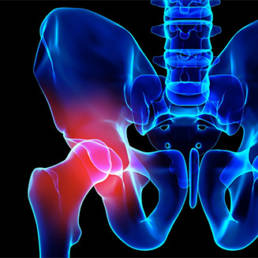ONE OF THE MOST IMPORTANT JOINTS IN THE BODY, THE HIP ALLOWS MOVEMENT AND FUNCTION OF THE LOWER HALF OF OUR BODY.
Although the hip joint is designed to withstand quite a bit of wear and tear, it can become damaged, particularly in athletes and those suffering from osteoarthritis. At Pain Relief Institute, we’re here to resolve your hip pain and repair damage to the joint, so you can move pain free.
Non-Surgical Treatment of Hip Pain

Once the medical team has determined the underlying cause of your hip pain, we will begin treating your condition or injury. Our treatment approach is what sets us apart from other doctors, because we try to avoid treatments that just mask the pain or surgical interventions unless they are truly necessary.
Depending on the cause of your hip pain, PRI’s team of leading providers for treatment of Hip Pain in Chicago will compose a completely customized treatment plan that’s designed to relieve your symptoms, repair any injuries and address the underlying disease, so you can get and stay back on your feet.
Other Non-Surgical Alternatives for Hip Pain:
A variety of conditions and injuries can result in chronic hip pain. Some of the most common ones among our patients in Chicago and surrounding suburbs include:
Osteoarthritis:
“Bone-on-Bone”
Bursitis:
Labral tear:
Sprain/Strain:
Hip Dislocation:
Common Symptoms of Hip Pain:
- Pain that is worse with activity and movement
- Pain into the groin
- Pain on the outside of your hip/thigh
- Clicking or Popping of the Hip
- Stiffness and dull ache
- Limping

When you arrive at Pain Relief Institute to be assessed for Hip Pain, our first step will be to determine exactly what’s causing your hip pain. Although hip pain is often complex and frequently involving the lower back and surrounding tendons and joints we aim to get the precise diagnosis. Through a thorough assessment we can save you time and relieve your pain as quickly as possible.
To begin, we’ll ask you questions about your symptoms, including activities that improve or worsen the discomfort and how long you’ve been experiencing your hip pain. From there, we’ll perform an extensive hands-on physical examination, during which we will test your range of motion and look for areas that are painful or swollen. Often times we will also perform X-rays to see if there are arthritic changes that have taken place and how severe they may be. Depending on our findings, we may also order additional imaging tests, such as MRI or ultrasound to check for joint space and cartilage thickness, or an ultrasound to visualize soft tissues, muscles, tendons and bursitis.
Diagnosing the Cause of your Hip Pain

